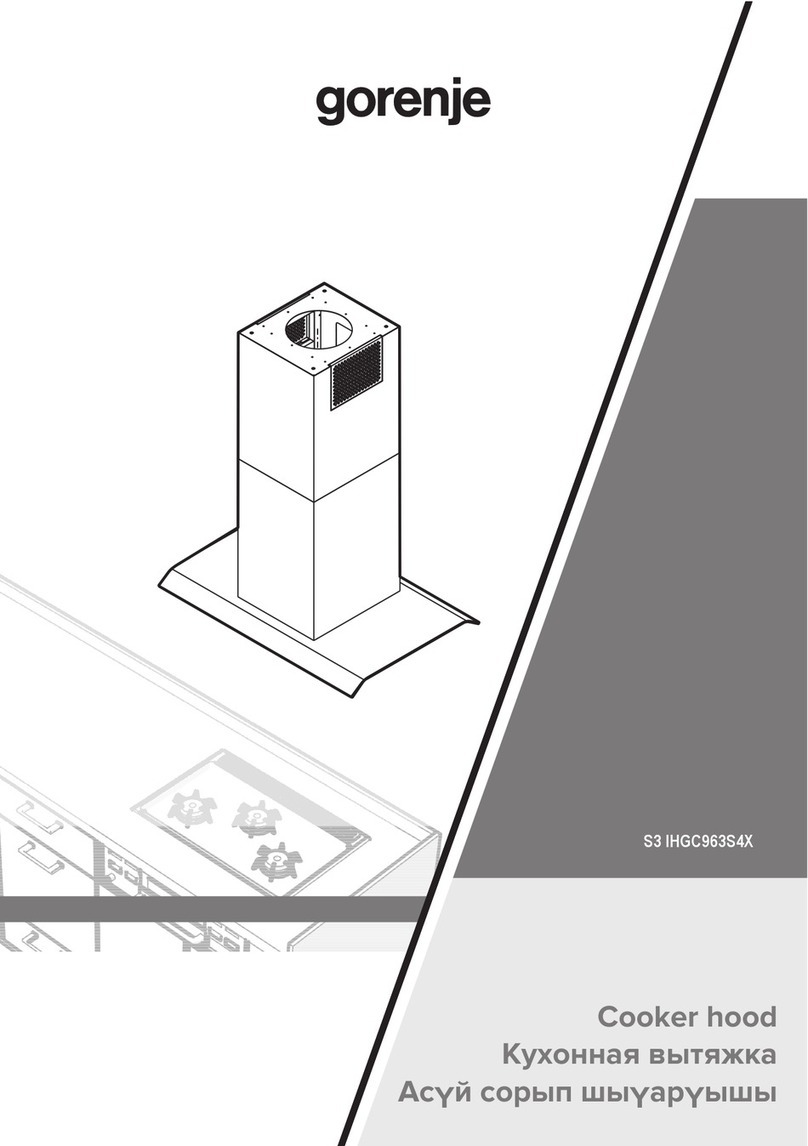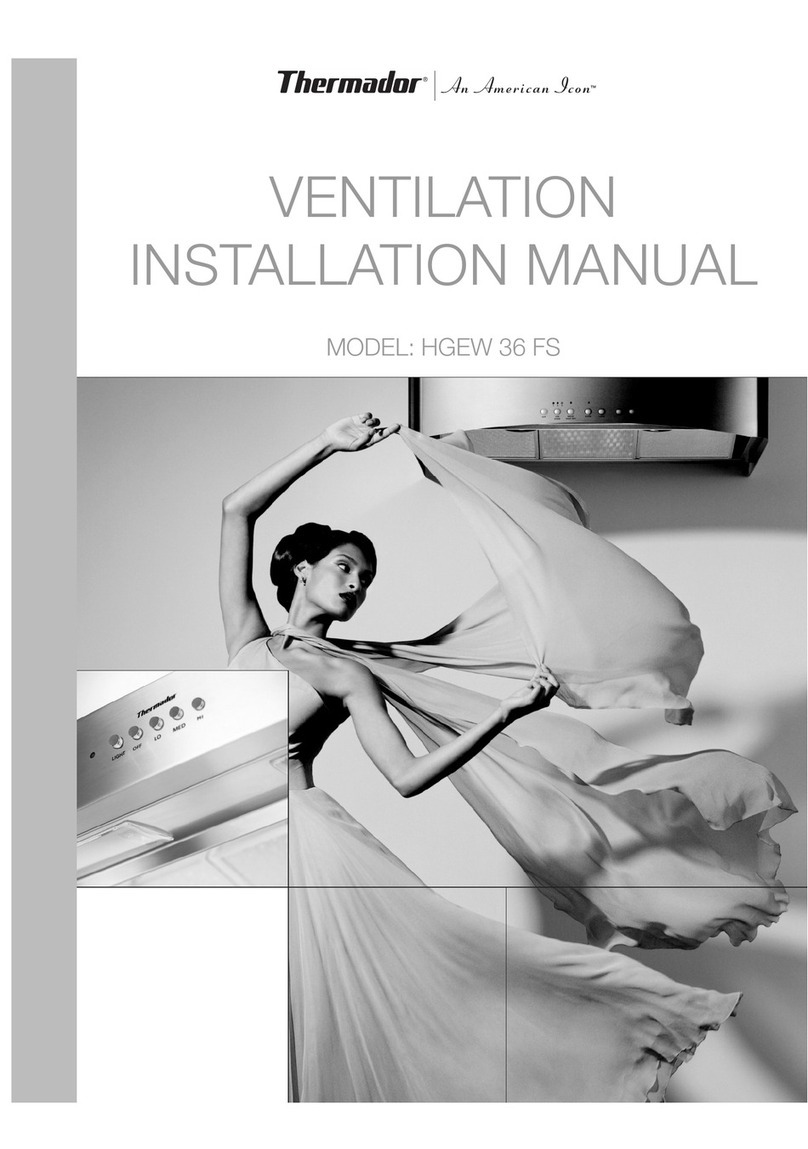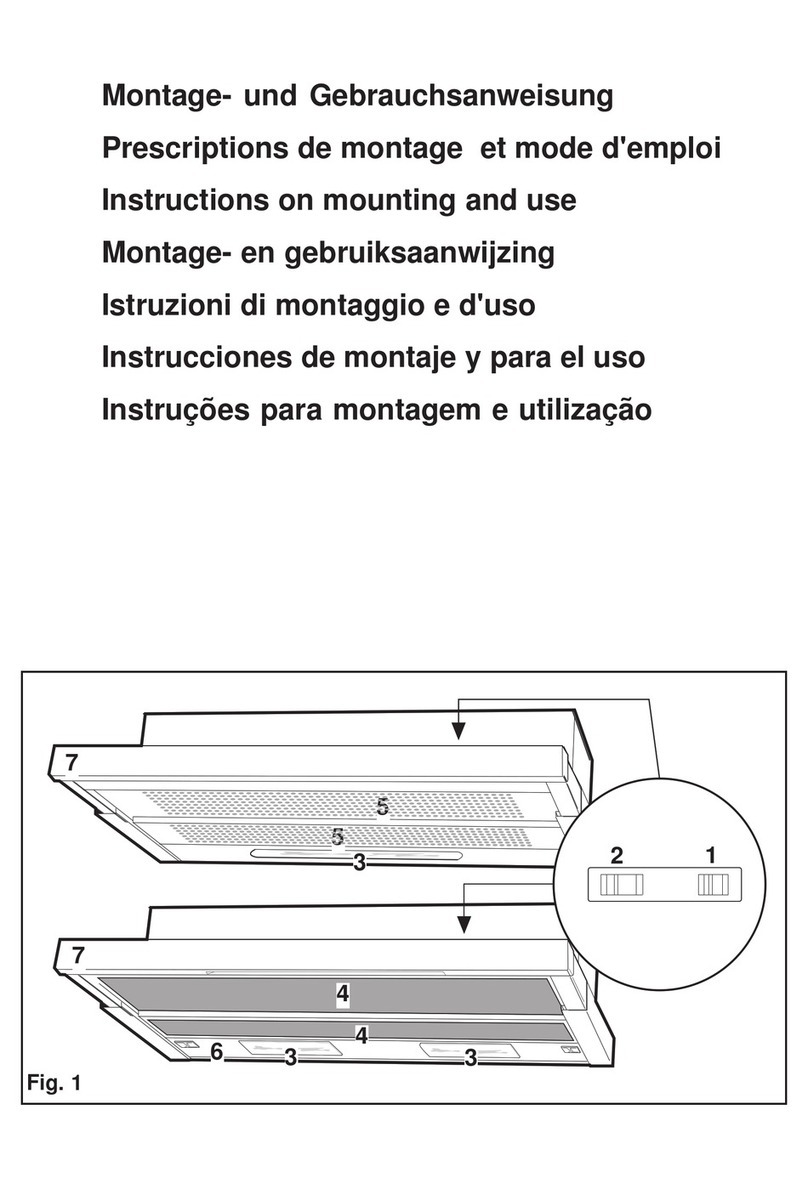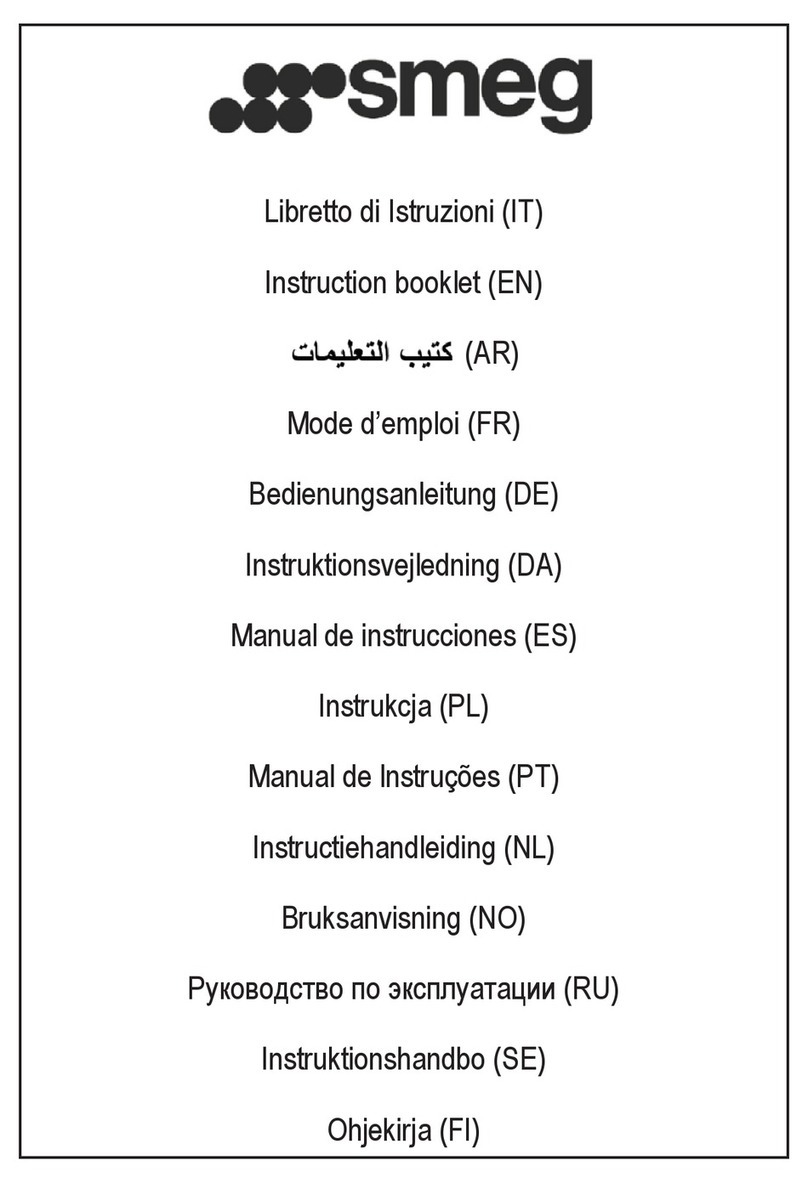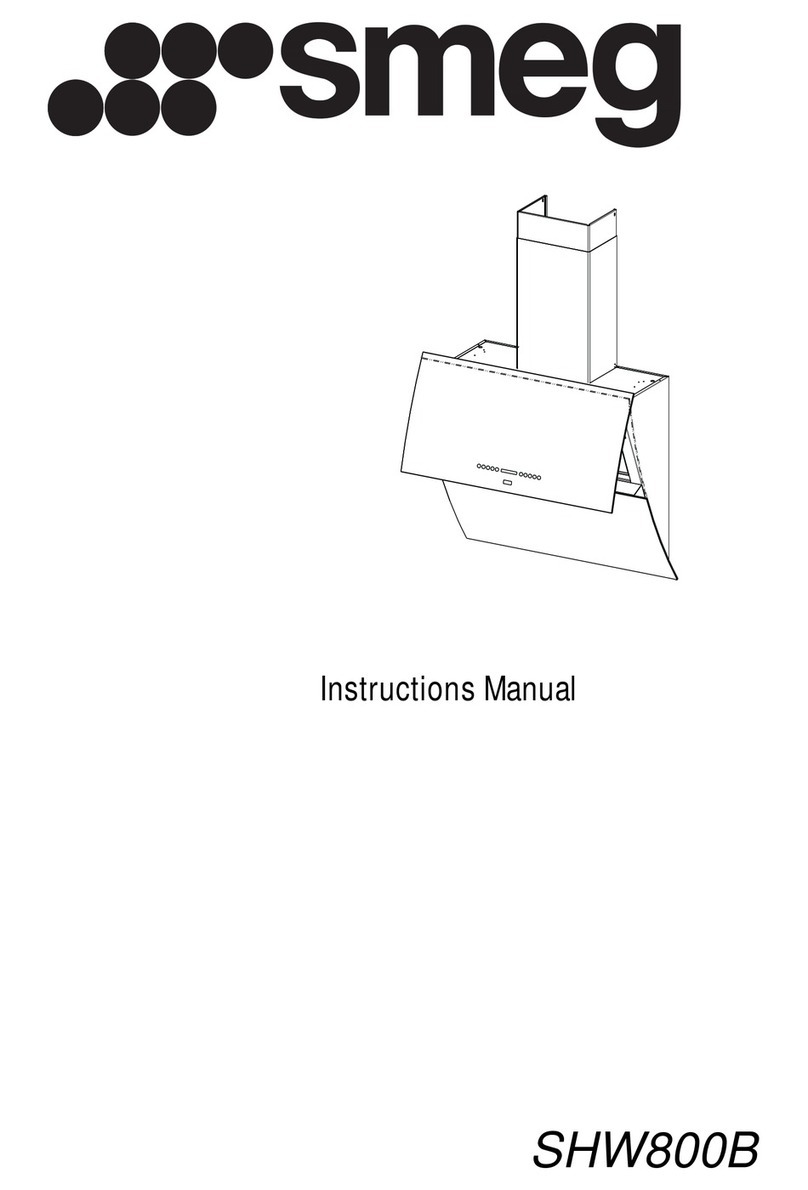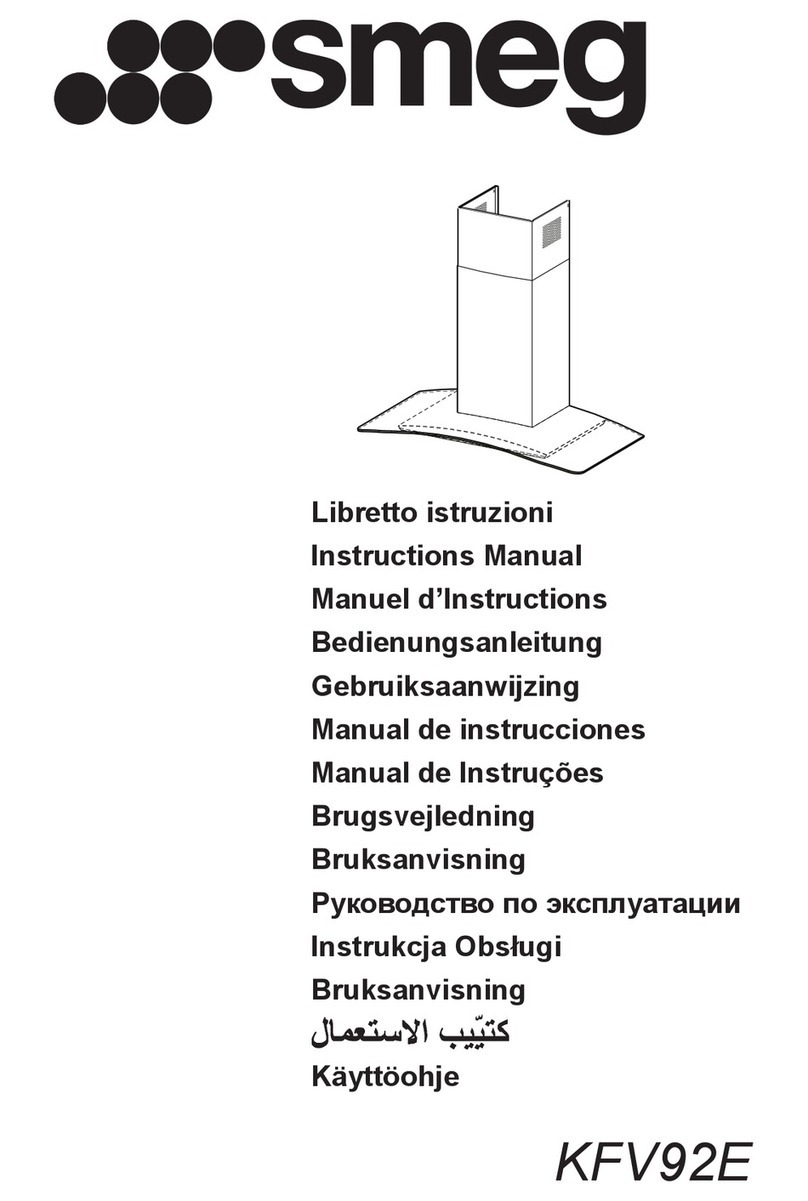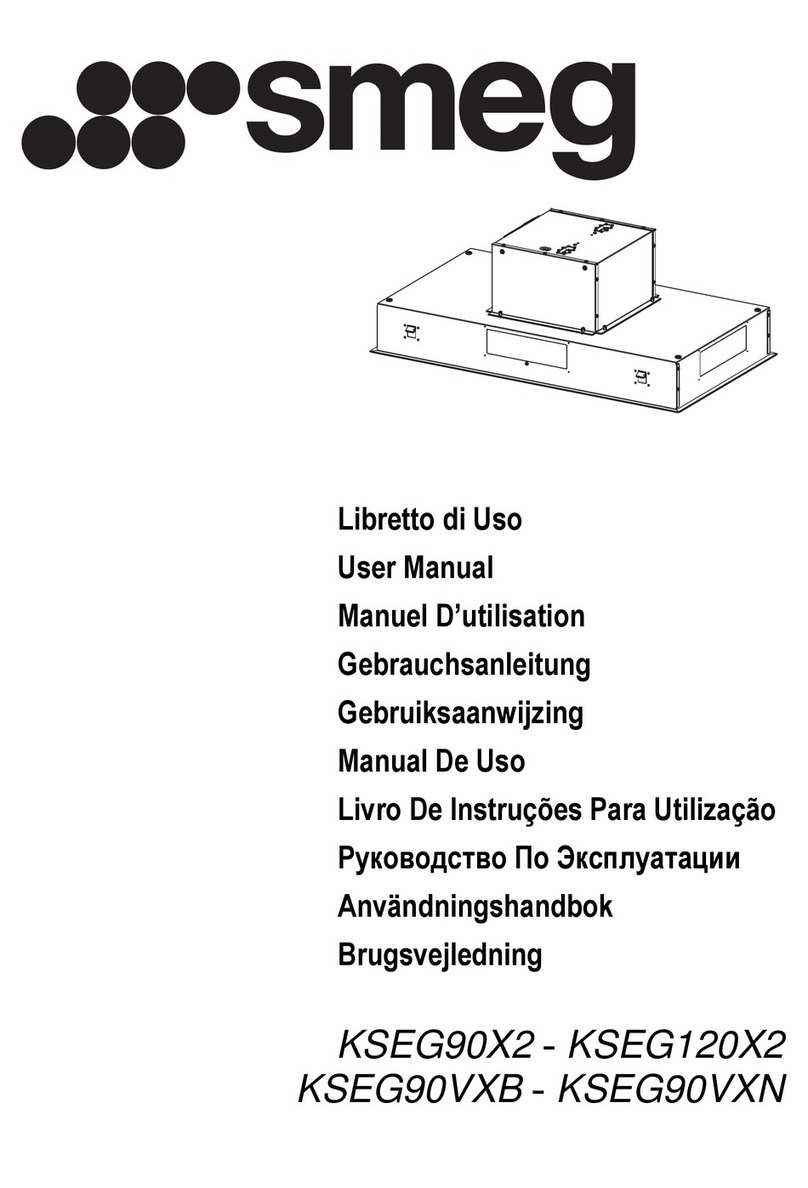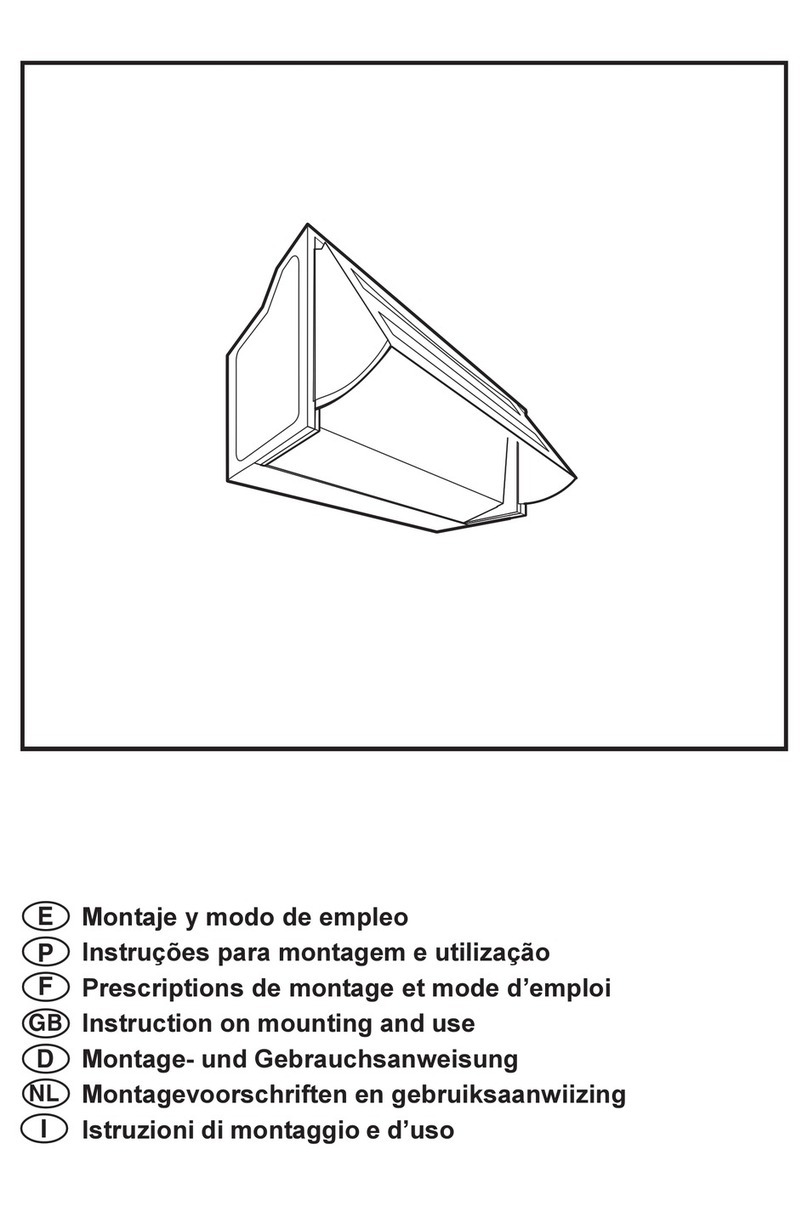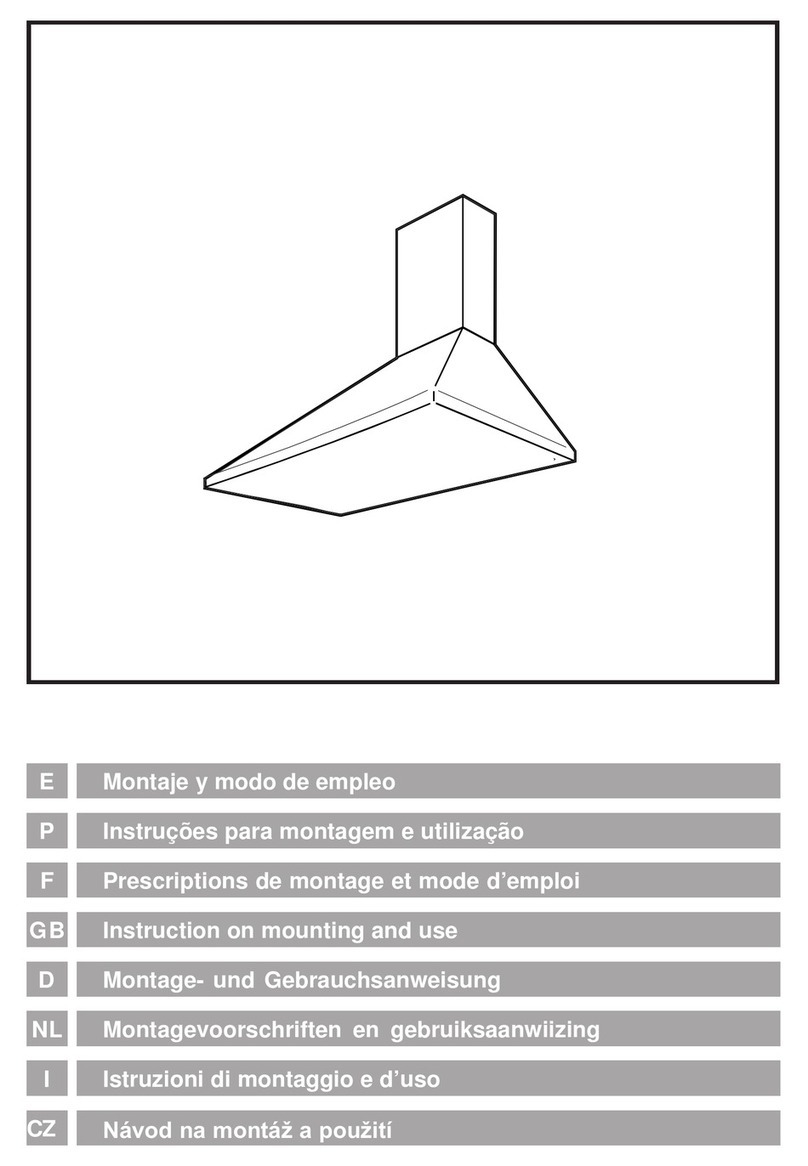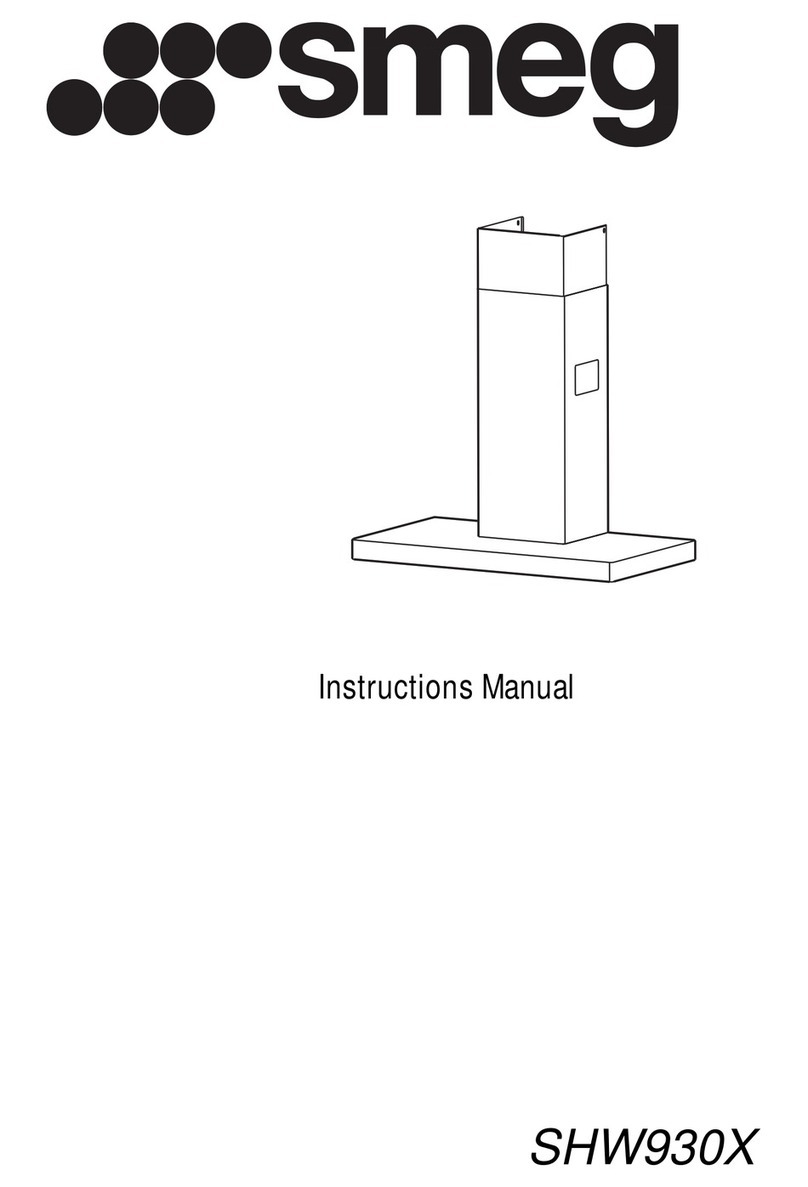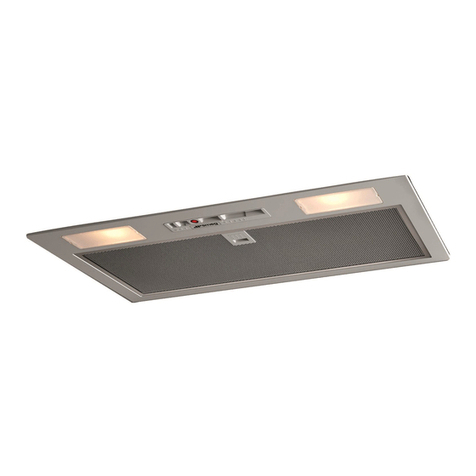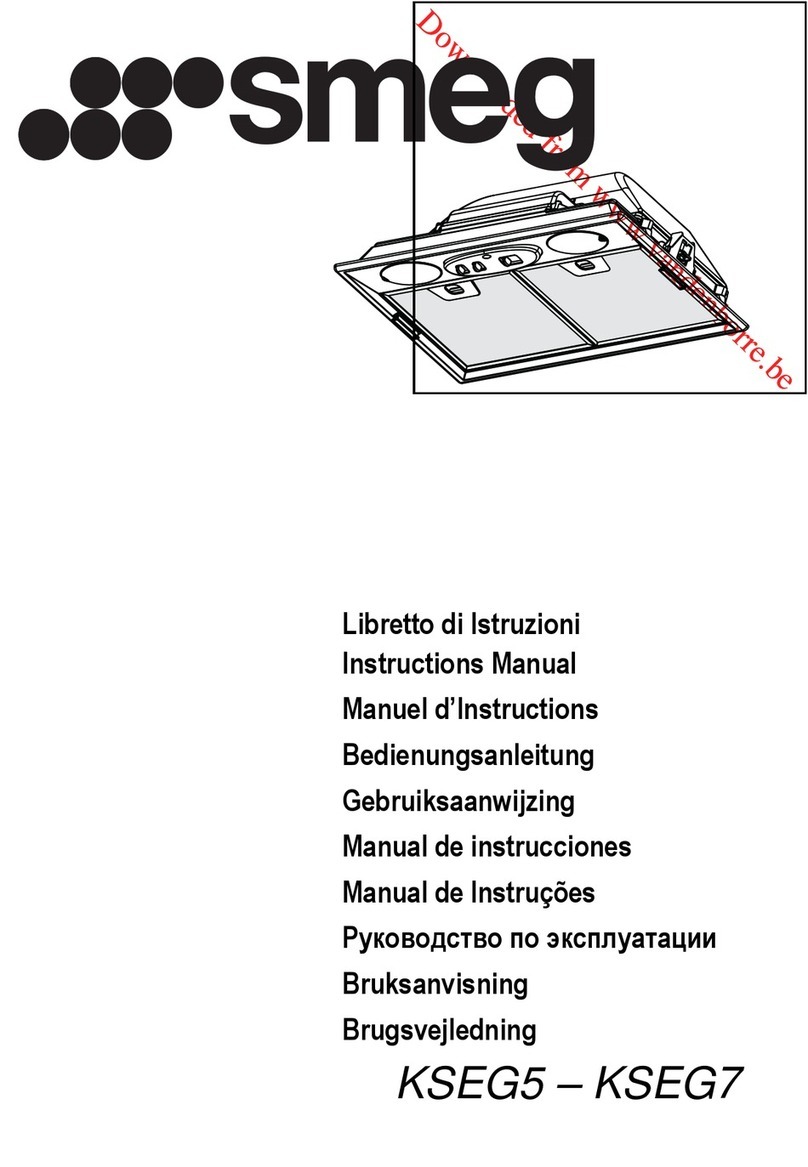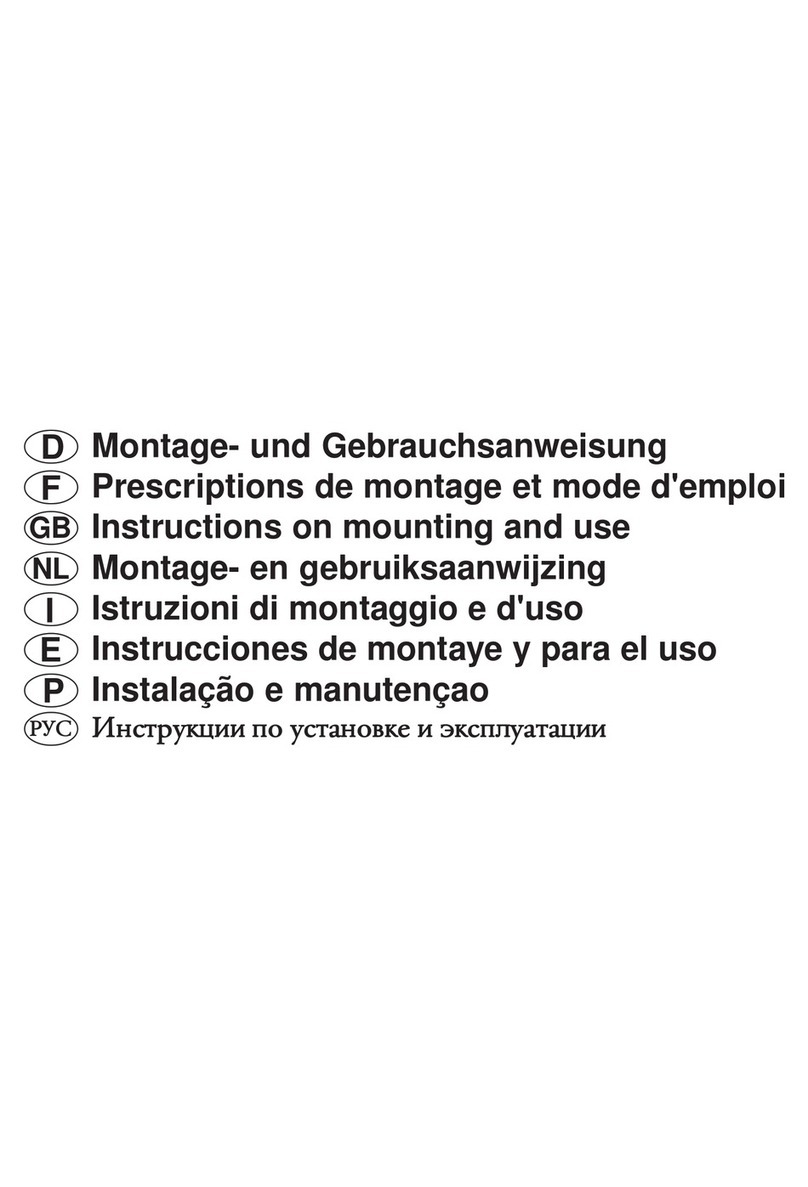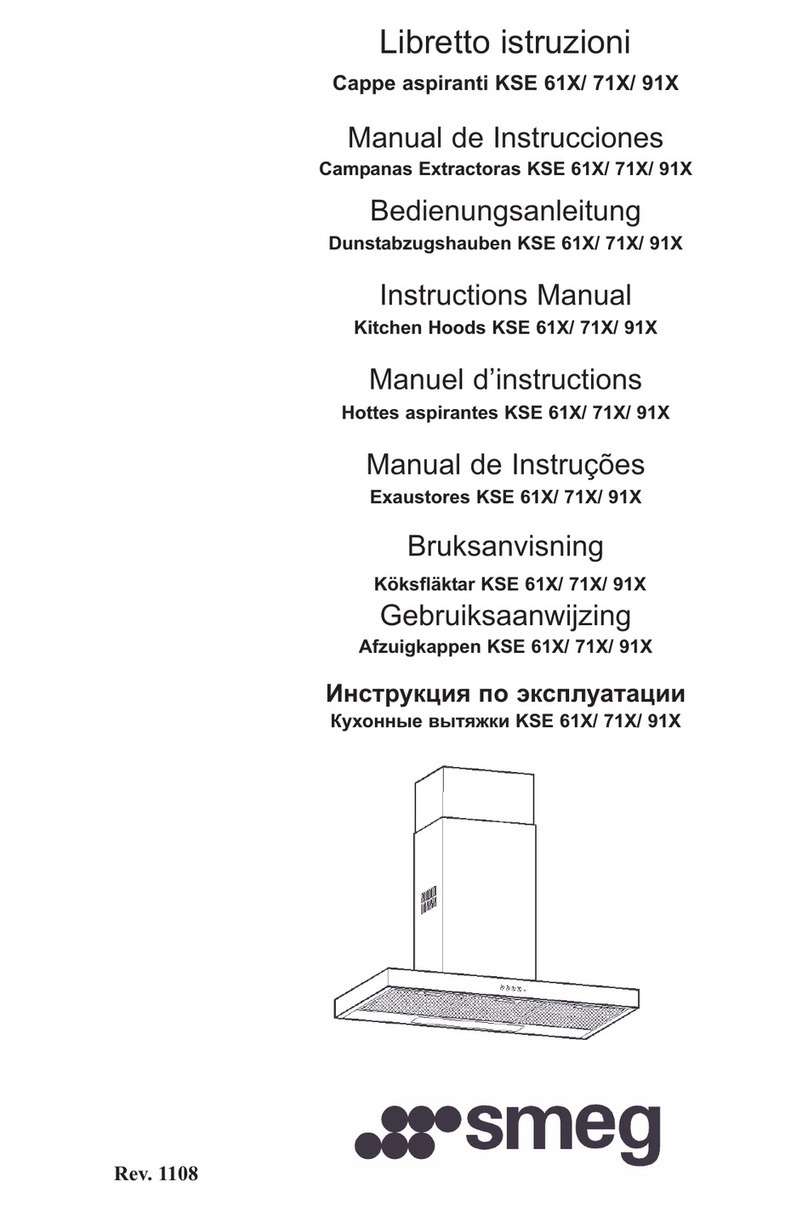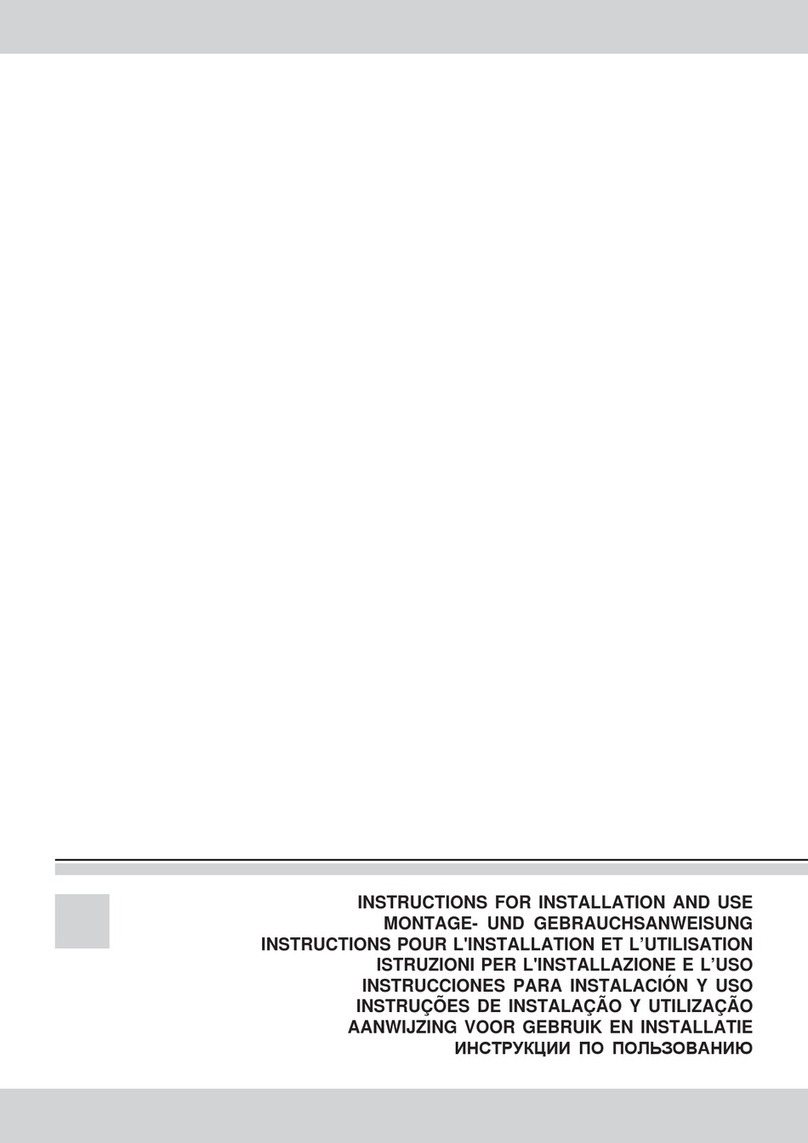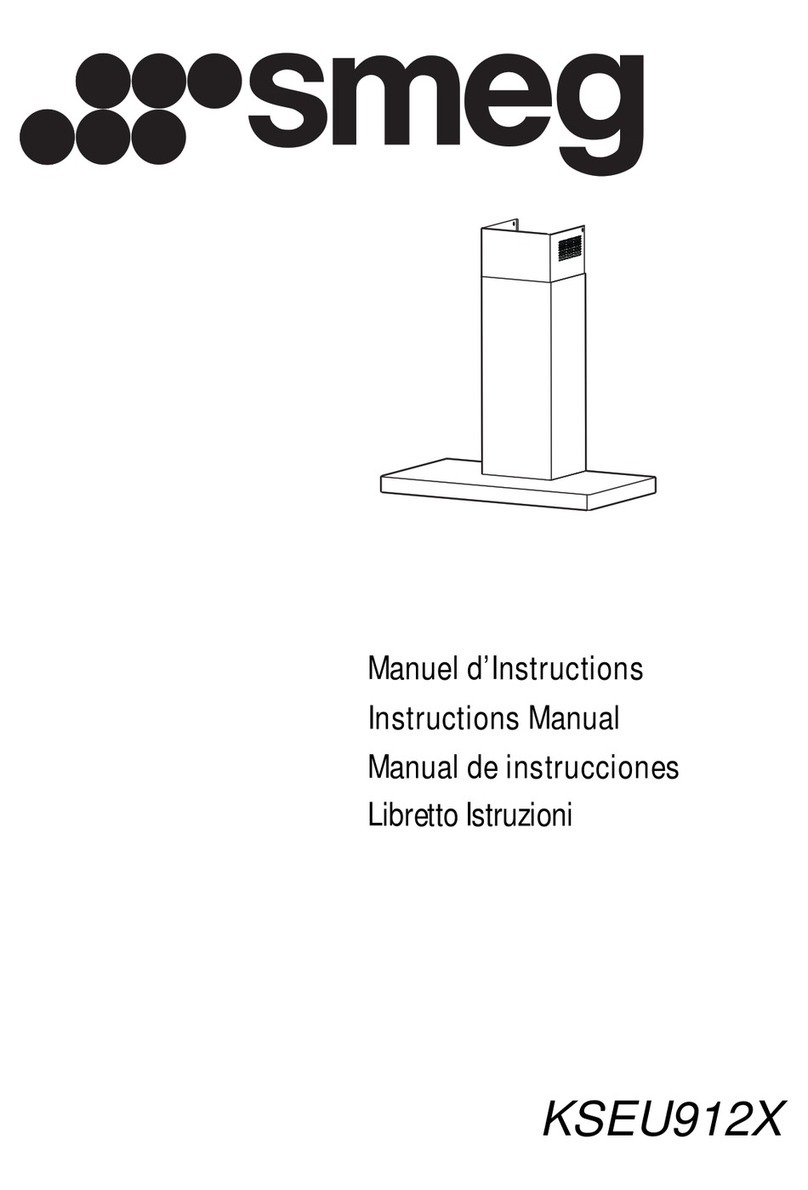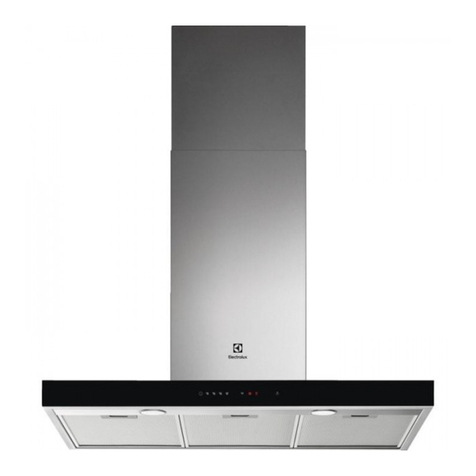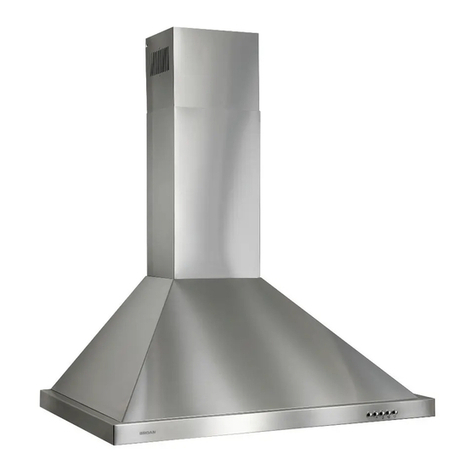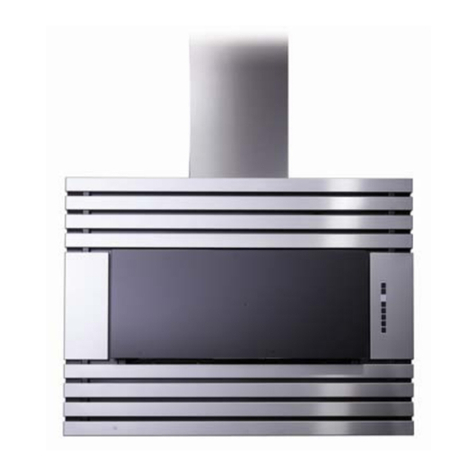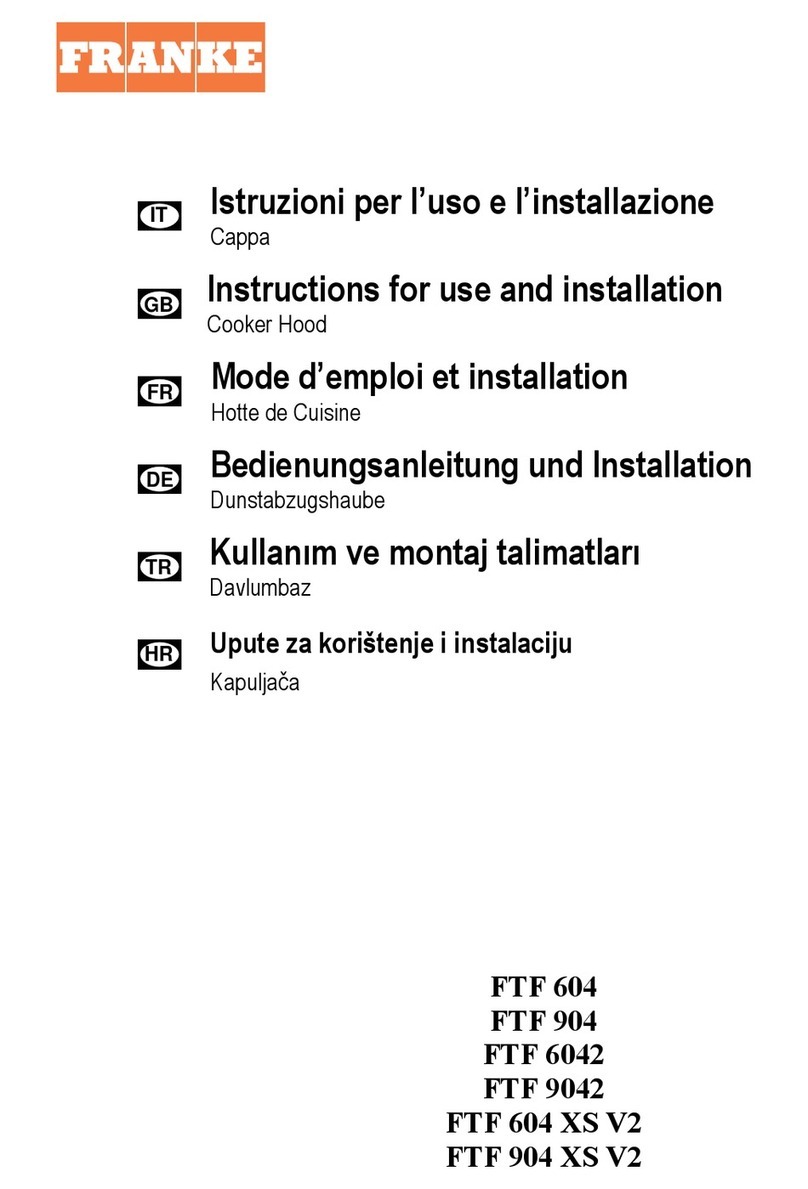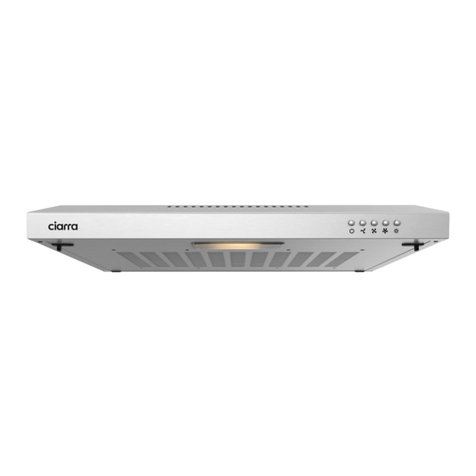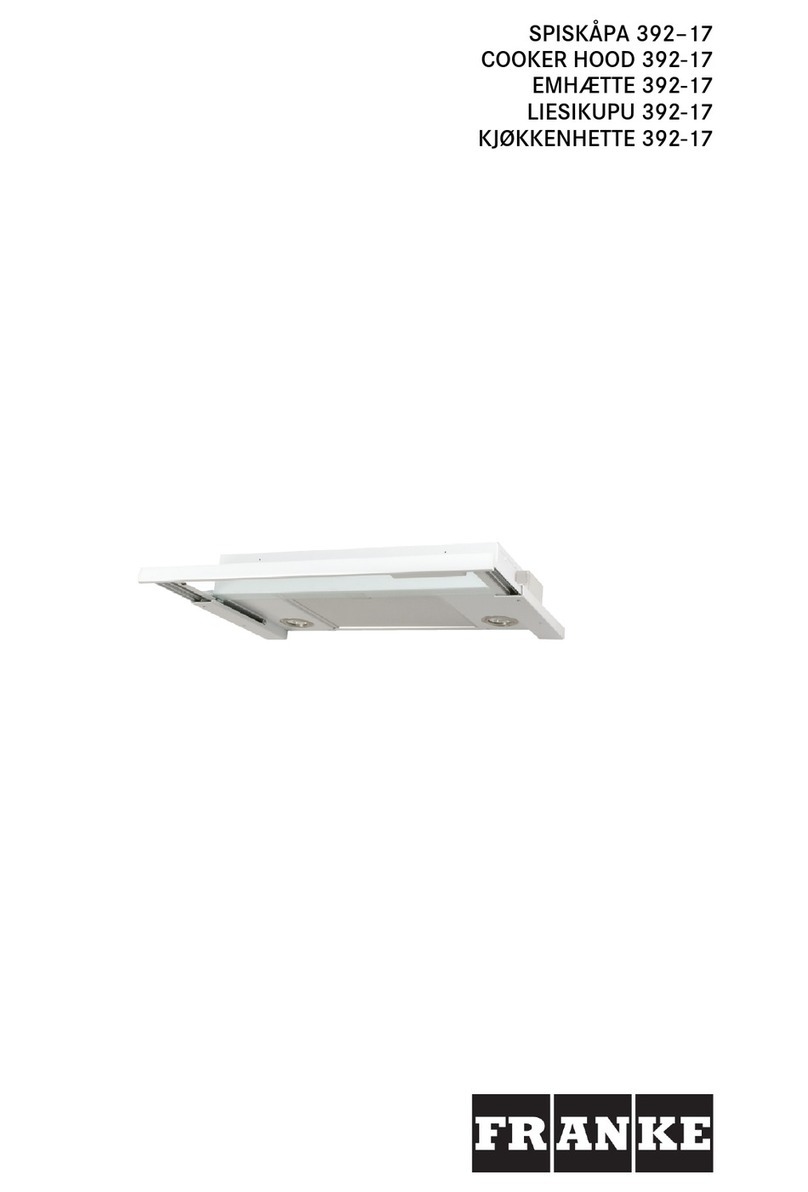INSTALLATION
Avant de procéder aux opérations de montage, pour manoeuvrer plus aisément l’appareil, démontez les filtres
à graisse: à l'aide de la poignée, pousser l’arrêt vers l’intérieur et tirer le filtre vers le bas (Fig. 3).
Fixation au mur (Fig. 4): en utilisant le gabarit de perçage appliquer au mur les chevilles qui vous sont fournies,
sachant que la distance entre la hotte et le plan de cuisson doit être au minimum de 65 cm. Y insérer deux des
vis qui vous sont fournies de sorte que votre appareil puisse être accroché à celles-ci au moyen des trous qui
sont prévus dans le fond (A). Après avoir accroché votre appareil, le fixer définitivement au mur en utilisant les
deux autres vis et au moyen des trous prévus dans le fond (B). Pour éviter d’abîmer votre appareil, nous vous
recommandons d’utiliser exclusivement les trous prévus par le constructeur.
Fixation des tuyaux télescopiques: Conditions essentielles pour le montage: – Prévoyez l’alimentation
électrique à l’intérieur du tuyau télescopique. – Si l'appareil doit être installé en version Aspirante, prévoyer le
trou d’évacuation de l’air. Posez le support (W) à 50 mm du plafond et placez-le à la verticale de votre hotte
en vous aidant des encoches se trouvant au centre du support (Fig. 5); a l’aide d’un crayon marquez les 2 trous
sur la paroi, puis percez et introduisez les chevilles qui sont fournies en équipement et fixez le support en utilisant
les 2 vis (fournies).
Version aspirante: raccordez le conduit pour l’évacuation de l’air à la bouche de sortie de l’air de la hotte; utilisez
un tuyau souple et bloquez-le sur la bouche de sortie de l’air de la hotte à l’aide d’un collier métallique (le tuyau
et le collier ne sont pas fournis). Effectuez le branchement électrique de la hotte à l’aide du câble d’alimentation.
Prendre les 2 tuyaux ensemble et les poser sur la partie supérieure de la hotte. Soulevez le tuyau supérieur jusqu’au
plafond et fixez-le au support à l’aide des 2 vis (Fig. 6).
Versione recyclage: effectuez le branchement électrique de la hotte à l’aide du câble d’alimentation. Fixez le
déflecteur d’air au tuyau inférieur comme indiqué à la Figure 7, en utilisant 2 vis. Prenez les 2 tuyaux ensemble
et posez-les sur la partie supérieure de la hotte.Soulevez le tuyau supérieur jusqu’au plafond et fixez-le au support
à l’aide des 2 vis (Fig. 6).
De plus, nous rappelons que, dans la version recyclage, l’utilisation des filtres à charbon est nécessaire ; vérifiez
s’ils sont installés, dans le cas contraire, montez-les en procédant comme suit, en fonction du modèle en votre
possession:
- si la hotte est équipée de filtres à charbon ronds (Fig. 8), accrochez les filtres à charbon avec un mouvement
rotatoire, dans le sens contraire des aiguilles d’une montre.
FONCTIONNEMENT
Selon les modéles, l'appareil est muni des types suivants de commandes:
Commandes de la Fig. 9:
P1- ON/OFF Eclairages; RESET alarme filtres : s’il est maintenu enfoncé pendant environ 2", lorsque l’alarme
filtres est activée, il réinitialise le comptage des heures. Alarme filtres: après 30h la lampe témoin de la touche
éclairages s’allume et elle reste allumée pendant 30" (Alarme Filtres à graisse); après 120h elle s’active pendant
30" mais la lampe témoin clignote (Alarme Filtres à charbon). La REINITIALISATION est signalée UNIQUEMENT
lorsque le moteur est arrêté, tant en automatique qu’en manuel.
Fonction en Automatique :
Pour activer la fonction en automatique : appuyer sur P2, le fonctionnement est signalé par la lampe témoin qui
s’allume; le clignotement de la lampe témoin indique que le capteur attend des données.
Pour paramétrer la sensibilité : en manuel et avec le moteur arrêté, il faut appuyer en même temps sur P2
et P3, la sensibilité déjà paramétrée est signalée par les lampes témoins de P3 ou P4 ou P5. Par conséquent,
pour modifier cette dernière, il faut appuyer sur P3 ou P4 ou P5 (mini, Moyen, MAXI), puis appuyer encore
sur P2 pour la mémoriser. De cette manière la sensibilité désirée a été mémorisée et en appuyant de nouveau
sur P2 on arrête la fonction en automatique.
Fonction en Manuel :
Lorsque la lampe témoin P2 est éteinte, l’on est en Manuel. En appuyant sur P3, lorsqu’on est en manuel, le moteur
s’actionne en 1ère vit. et la lampe témoin correspondante s’allume. En maintenant P3 enfoncé pendant 2" le moteur
s’arrête. Lorsqu’on appuie sur P4 on passe en 2ème vit. et la lampe témoin correspondante s’allume. Lorsqu’on appuie
sur P5 on passe en 3ème vit. et la lampe témoin correspondante s’allume.
Commandes de la Fig. 10:
P1) OFF Eclairages: Si pressé, il arrête les éclairages.
P2) ON Eclairages: Si pressé, il allume les éclairages.
P3) OFF/- Moteur: Diminue la vitesse pour arriver à la vitesse minimum.
Si pressé pendant 2" le moteur est arrêté.
Si pressé pendant 2" lorsque la REINITIALISATION DES FILTRES est activée il remet à zéro le comptage des
HEURES.
P4) ON/+ Moteur: Actionne le moteur et augmente la vitesse de ce dernier pour arriver à la vitesse maximum.
P5) ON/OFF: Active et désactive le Capteur (en AUTOMATIQUE ou en MANUEL). En Automatique le voyant L2 est
allumé et L1 signale la vitesse en cours. En Manuel le voyant L2 est éteint.
L1) 4 Voyants: 4 voyants VERTS. Ils signalent la vitesse paramétrée.
